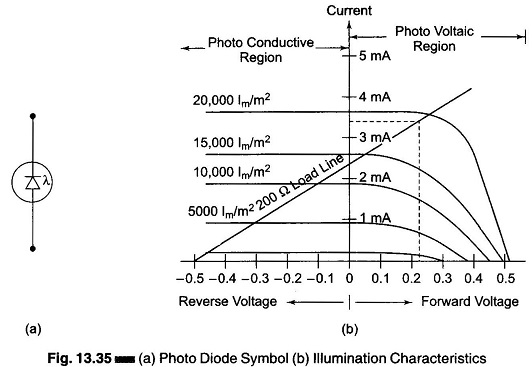What is a Photodiode?:
A reverse biased Semiconductor diode passes only a very small leakage current (a fraction of 1μA in silicon diodes), if the junction is exposed to light. Under illumination, however, the current rises almost in direct proportion to the light intensity. Hence, the photodiode can be used for the same purposes as a photoconductive cell.
This device, when operated with a reverse voltage applied, functions as a photo-conductive cell. When operated without reverse voltage it operates as a photo-voltaic cell.
A photodiode can also be arranged to change from photo-conductive to photo-voltaic mode.
The response time of a photo-diode is very fast, so that it may be used in applications where light fluctuations occur at high frequency, but a photo-diode cell is useful only at very low frequencies.
The symbol and illumination characteristics are as shown in Figs. 13.35(a) and (b).
